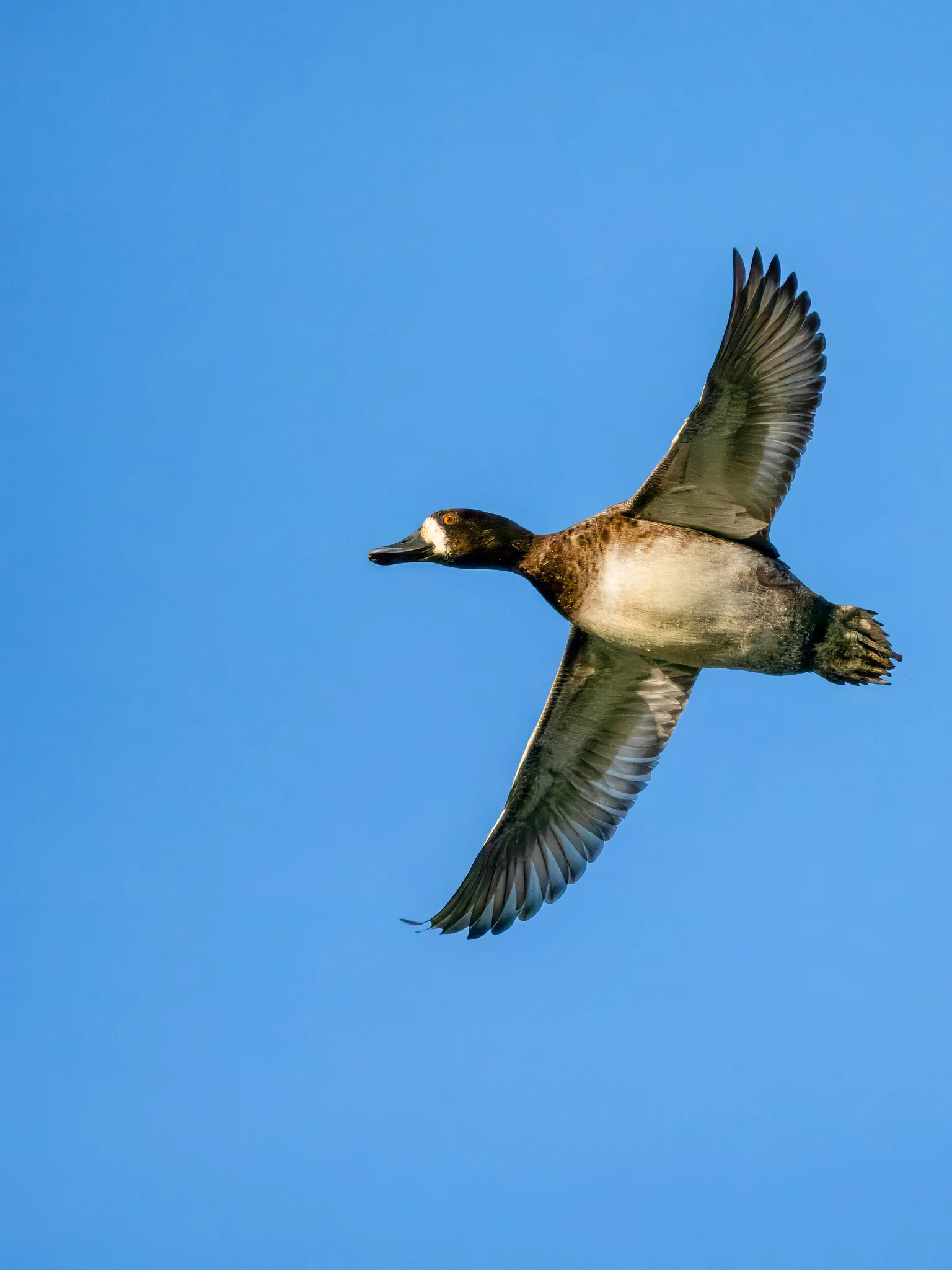Pleasantly mild conditions for February saw temperatures close to the warmest Valentine's Day on record. Southern gusts whipped along the north-west African coastline, bringing Saharan dust to the south coast and producing a few spring visitors. An early House Martin was in Dorset, with a handful of Swallows at south-coast localities. On 16th, a Little Ringed Plover provided a surprise with Ringed Plovers near Lymm, Cheshire, although its plumage perhaps indicated that it has wintered in north-west Europe rather than it constituting a genuine spring migrant.
On the rarity front, a Gull-billed Tern in Co Cork at Kilkeran Lake on 18th came as a shock. The species is rarely seen in its winter plumage in northern Europe and, unsurprisingly, this is earliest-ever Irish record. Four Ring-billed Gulls included a notable record for Avon at Southmead, Bristol. The Avon recording area has been added to the BirdGuides sightings database, with subscribers able to exclusively receive notifications for Avon, Gloucestershire and Somerset from 1 March 2024. Subscribers will need to set up new filters and alerts for Avon to continue receiving notifications for the Greater Bristol area. You can find more information about the changes here. Meanwhile, another poor week for white-winged gulls concerned 24 Iceland Gulls (including six Kumlien's) and 16 Glaucous Gulls.

Gull-billed Tern, Kilkeran Lake, Cork (Christopher O'Sullivan).

Glaucous Gull, Lerwick, Mainland, Shetland (Rebecca Nason).
Unfortunately Shetland's Red-necked Grebe was found dead on 15th, though this provided an unexpected opportunity to confirm its subspecific identity outright. As expected, biometrics confirmed it as a male of the Nearctic form holboellii – the first confirmed modern-day record for Britain. Holboell's Red-necked Grebe is native to North America as well as East Asia and currently resides on Category B of the British list owing to a single specimen record from Gruinard Bay, Highland, in September 1925. Other credible claims include one off Barra, Outer Hebrides, from January-March 2018.

Holboell's Red-necked Grebe, Quendale, Mainland, Shetland (Roger Riddington).
Warwickshire's impressive – although many would suggest suspicious – run of Ferruginous Duck records in recent years continued with at least one drake at Brandon Marsh on 18th. Others persisted in Nottinghamshire and Norfolk. Somerset's Baikal Teal lingered at Greylake RSPB and the resident American Black Duck was again on the Mullet Peninsula, Co Mayo. Additional totals consisted of 25 Ring-necked Duck, 22 Green-winged Teal, 12 Lesser Scaup, six American Wigeon and three Garganey, plus Smew at 35 sites.

Lesser Scaup, Penberry Reservoir, Pembrokeshire (Sam O'Donnell).

Smew, Queen Elizabeth II CP, Northumberland (Frank Golding).
The Norfolk Black Scoter was complemented by a total of six Surf Scoter across Britain and Ireland, with the double of White-winged Scoter and Pied-billed Grebe still on Inishmore, Co Galway, on 15th. A returning third-winter drake King Eider resided off Joppa, Lothian and four White-billed Divers were off the Orkney coastline.
A trio of Richardson's Cackling Geese split between Co Sligo and Islay, Argyll, with additional notable geese including three Snow and five Red-breasted. The few Tundra Bean Geese around included nine at Low Marishes, North Yorkshire. At least four Grey-bellied Brant continued in Dublin, with Black Brant in Essex and Co Wexford.

Richardson's Cackling Geese (centre and far right) with Barnacle Geese, Islay, Argyll (Joe Graham).

Red-breasted Goose (left) with Dark-bellied Brent Goose, Keyhaven Marshes, Hampshire (David Camp).
Waxwings were again widespread despite a small drop-off in numbers throughout February, with high double-figure flocks still present as far south as London and Surrey. The Northumberland Black-bellied Dipper enjoyed with the confines of suburban Cramlington for another week, while the Isle of Man chalked up a new Dusky Warbler. A Little Bunting was reported in Pembrokeshire, with one at Godmersham, Kent, again proving popular. Great Grey Shrikes numbered three and Shore Larks were at eight sites.

Black-bellied Dipper, Cramlington, Northumberland (Tom Tams).

Shore Lark (right) with Eurasian Skylark, High Bradfield, South Yorkshire (Peter Garrity).
A new juvenile Pallid Harrier quartered around the recording area at Spurn, East Yorkshire, from 11th, with news belatedly emerging of its presence across the River Humber along Ancholme Valley, Lincolnshire, in late January. Others remained in Norfolk, Glamorgan/Carmarthen and Pembrokeshire. The North Yorkshire Moors tally of wintering Rough-legged Buzzards increased to three with a new juvenile at Great Ayton Moor, Cleveland, on 18th, while the adult male Snowy Owl was again at Ronas Hill, Mainland Shetland, on 14th.
Rare shorebird totals comprised three Long-billed Dowitchers, two Lesser Yellowlegs and the Somerset Kentish Plover. The unringed White Stork lingered in Cambridgeshire.

Lesser Yellowlegs, Frampton Marsh RSPB, Lincolnshire (Ian Bollen).
Western Palearctic
It's impossible to keep Cape Verde out of the headlines at the moment. This week saw the momentous announcement of the first successful recorded breeding of White-tailed Tropicbird in the Western Palearctic, after an adult and chick were noted in a burrow on Ilhéu de Cima on 13th. A pair first attempted to breed on the islet in 2020.
A noteworthy run on the Faroes saw the island chain's first Bufflehead – an adult drake – from 14th followed by the archipelago's second Hooded Merganser a day later. Denmark's fourth Baikal Teal at Holløse continues the strong run of the species across the WP in recent years, with a Stejneger's Scoter at nearby Høve Strand.

Hooded Merganser, Suðuroy, Suðuroy (Silas Olofson).
Pacific Divers remained in both Denmark and Israel. Lingering rarities consisted of two Ross's Geese in Belgium, the Forster's Tern in France and a Black-faced Bunting in Italy. A Black Scoter was off the Polish coast.
Afrotropical rallids continued to arrive with Egypt's first Lesser Moorhen at Faiyum. Best in Spain concerned a Moroccan Wagtail in Andalucia and a Hudsonian Whimbrel in Asturias. A Mourning Wheatear was at Akrotiri, Cyprus.

Mourning Wheatear, Akrotiri, Akrotiri (Peter Bromley).
- Keep up to date with by-the-minute sightings updates of rarities, migrants and significant birds in your local area at www.birdguides.com/sightings or via the BirdGuides app. New users are entitled to a one-month free trial.



